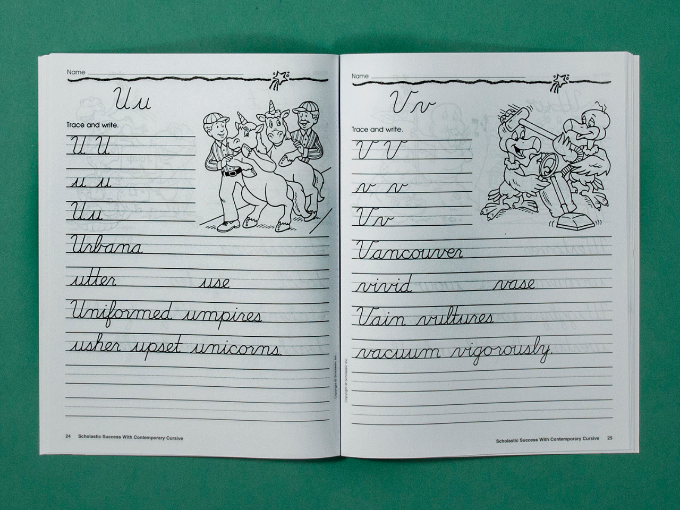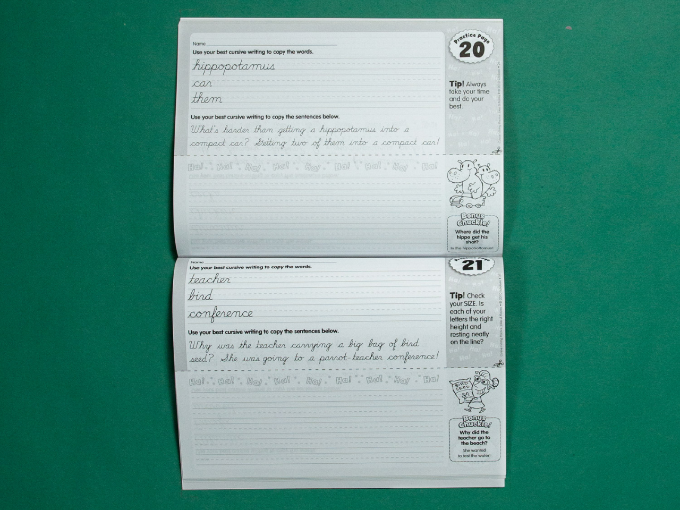For many parents, learning cursive was a rite of passage in elementary school. You likely sat down at your desk and eagerly practiced each letter, quickly mastering the alphabet so you could form words and phrases with a free-flowing flourish that writing in print just doesn’t offer.
In many classrooms today, cursive writing practice takes a backseat to keyboard proficiency. There may be a few introductory lessons on how to form letters in cursive and how to read it, but instruction is often limited — kids are either writing in print or relying on the keyboard to communicate their thoughts and ideas.
Though cursive may be seen as dated and outmoded by some, one Université de Montréal study suggests that children who have cursive writing practice may receive a significant boost to critical reading and writing skills. Read on for the specific three benefits kids get from learning cursive.
1. Your child may become a better speller.
Researchers found that elementary students who learn cursive are usually better spellers. That may be because kids who write in cursive are often able to grasp how letters fit together to form words much quicker than those who write in print. This speedy understanding leads to better language processing, which is a critical element when it comes to mastering spelling.
2. Your child will likely be able to form words more easily.
Cursive encourages kids to visualize each letter as one united word, which makes it easier for children to remember — or memorize — the word they’re forming and writing. Researchers also note that kids are less likely to write letters backwards when writing in cursive: When writing in cursive, if a child were to write the letter backwards, they wouldn’t be able to tie it to the letter that follows.
3. Your child could become a better writer overall.
Kids that write in cursive don’t just form words more easily, they also write better sentences. Researchers found that kids who learned and wrote in cursive experienced an increase in skills related to syntax. This means that cursive writers often have a better understanding of how words should be organized and combined to craft strong phrases and complex sentences.







